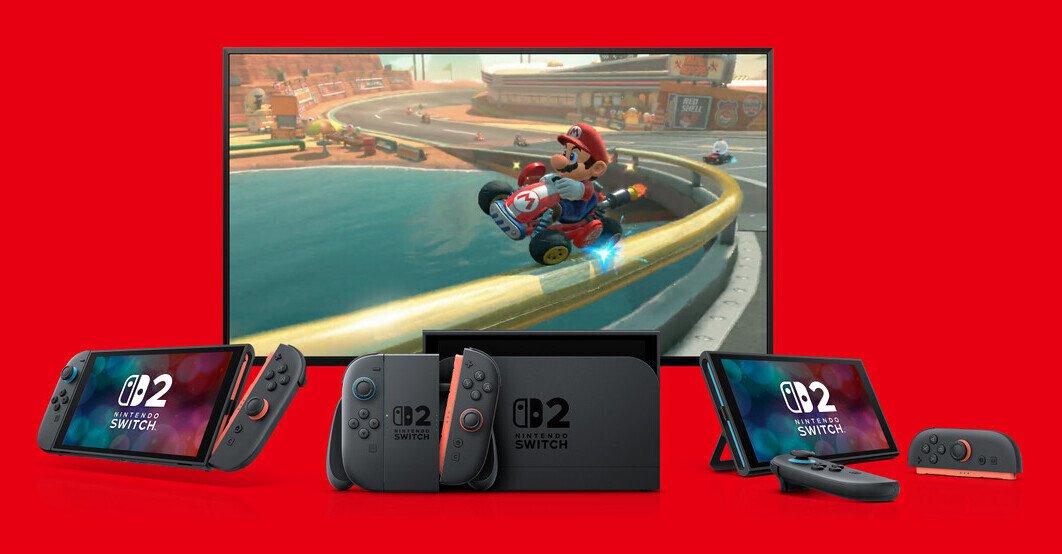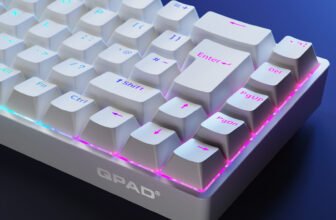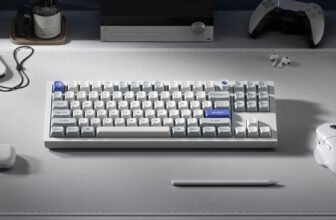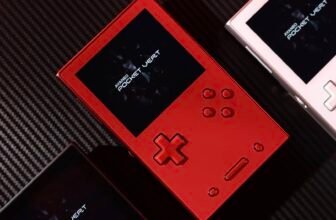Nintendo has quietly finalized the technical specifications of its next-generation hybrid console, the Nintendo Switch 2, ahead of its global launch on June 5. The company confirmed the hardware platform will be based on a custom NVIDIA system-on-chip labeled the T239, marking a shift from the previous Tegra X1 found in the original Switch to a newer Ampere-based architecture.
The T239 SoC features eight Arm Cortex‑A78C cores built on a 64‑bit ARMv8 instruction set. These cores support modern cryptographic instructions and no longer offer compatibility with legacy 32‑bit applications. Each core is equipped with 64 KB of L1 instruction and 64 KB of data cache. For developers, six of these cores are accessible for games, while the remaining two are reserved for the operating system and background tasks. The processor runs at 998 MHz in handheld mode and increases to 1,101 MHz when docked. Under certain conditions, the CPU can scale up to 1.7 GHz for short bursts, offering extra performance when needed.
Graphics performance sees a substantial upgrade. The integrated GPU is a full Ampere-based design featuring 1,536 CUDA cores. It runs at a maximum of 1,007 MHz in handheld mode and 561 MHz when docked. Despite the lower clock in docked mode, the GPU delivers a higher compute throughput—up to 3.07 TFLOPS—compared to 1.71 TFLOPS in handheld use. Some GPU resources remain reserved for the operating system, leaving the rest for game rendering and effects.

Memory capacity has tripled compared to the original Switch. The new system uses 12 GB of LPDDR5X RAM, split into two 6 GB modules. Memory bandwidth peaks at 102 GB/s while docked, and 68 GB/s in handheld mode. Of the 12 GB total, 9 GB is available for games and applications, with 3 GB allocated to system processes.
Nintendo has also included a hardware-level File Decompression Engine to handle LZ4-compressed assets, offloading this workload from the CPU. This change is intended to speed up loading times and maintain consistent thermal performance. Storage has been upgraded to 256 GB of internal UFS, with MicroSD Express support for cards up to 2 TB.
The display has also been improved. The new Switch features a 7.9-inch, 1080p LCD panel supporting HDR10 and a variable refresh rate of up to 120 Hz in handheld mode. While HDMI VRR is not currently supported through the dock, the built-in display does support variable refresh to reduce stuttering and tearing during gameplay.
With a mix of modern architecture and optimizations for both handheld and docked use, the Switch 2 represents a significant generational leap while retaining the flexibility that defined the original system. Nintendo appears focused on balancing power efficiency with performance, setting the stage for developers to take greater advantage of the hardware starting this summer.
Specification
| Category | Specification |
|---|---|
| Launch Date | June 5, 2025 |
| Processor (SoC) | NVIDIA T239 (Custom Ampere-based SoC) |
| CPU Architecture | 8x Arm Cortex-A78C cores (64-bit ARMv8) |
| CPU Configuration | 6 cores for games, 2 reserved for system tasks |
| CPU Cache | 64 KB L1 instruction + 64 KB L1 data per core |
| CPU Clock Speeds | – 998 MHz (Handheld) – 1,101 MHz (Docked) – Up to 1.7 GHz (Burst) |
| GPU Architecture | NVIDIA Ampere |
| CUDA Cores | 1,536 |
| GPU Clock Speeds | – 1,007 MHz (Handheld) – 561 MHz (Docked) |
| GPU Performance | – 1.71 TFLOPS (Handheld) – 3.07 TFLOPS (Docked) |
| Memory | 12 GB LPDDR5X (2x 6 GB modules) |
| Memory Allocation | 9 GB for games, 3 GB reserved for system |
| Memory Bandwidth | – 68 GB/s (Handheld) – 102 GB/s (Docked) |
| Storage | 256 GB UFS internal storage |
| Expandable Storage | MicroSD Express, up to 2 TB |
| Decompression Engine | Hardware-based LZ4 decompression module |
| Display | 7.9-inch LCD, 1080p resolution, HDR10, Variable Refresh Rate (up to 120 Hz) |
| External Display | HDMI output (No VRR support at launch) |
| Operating System | Custom Nintendo OS (details not disclosed) |
| Backward Compatibility | Not officially confirmed |







